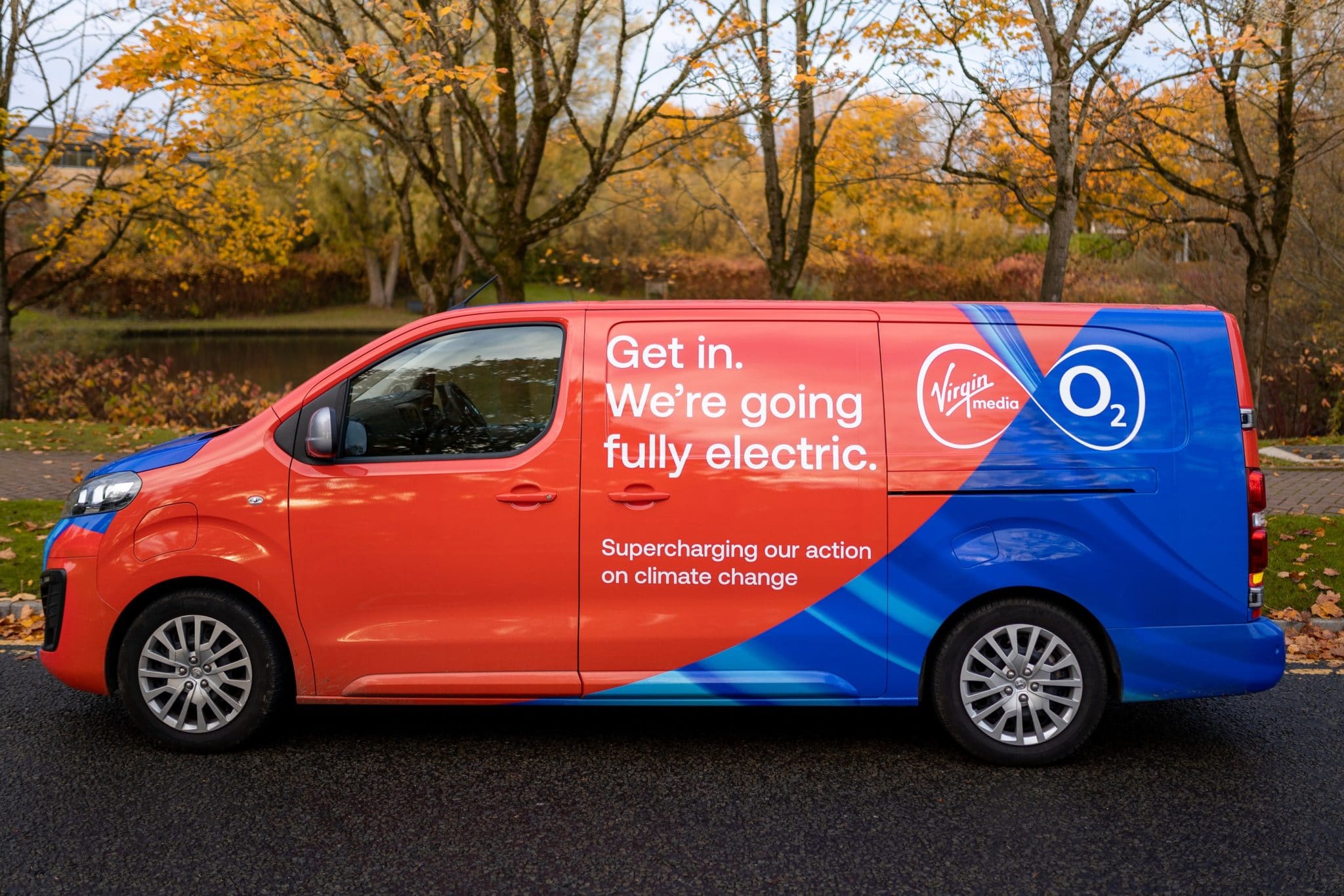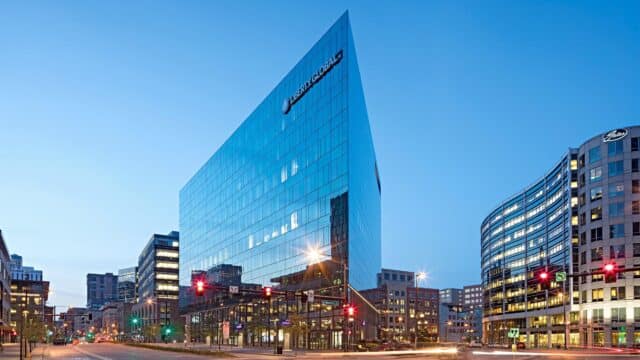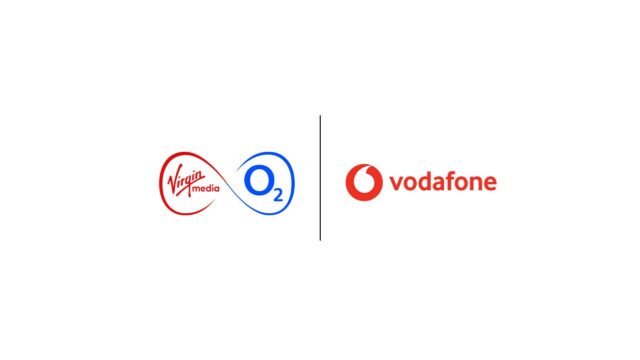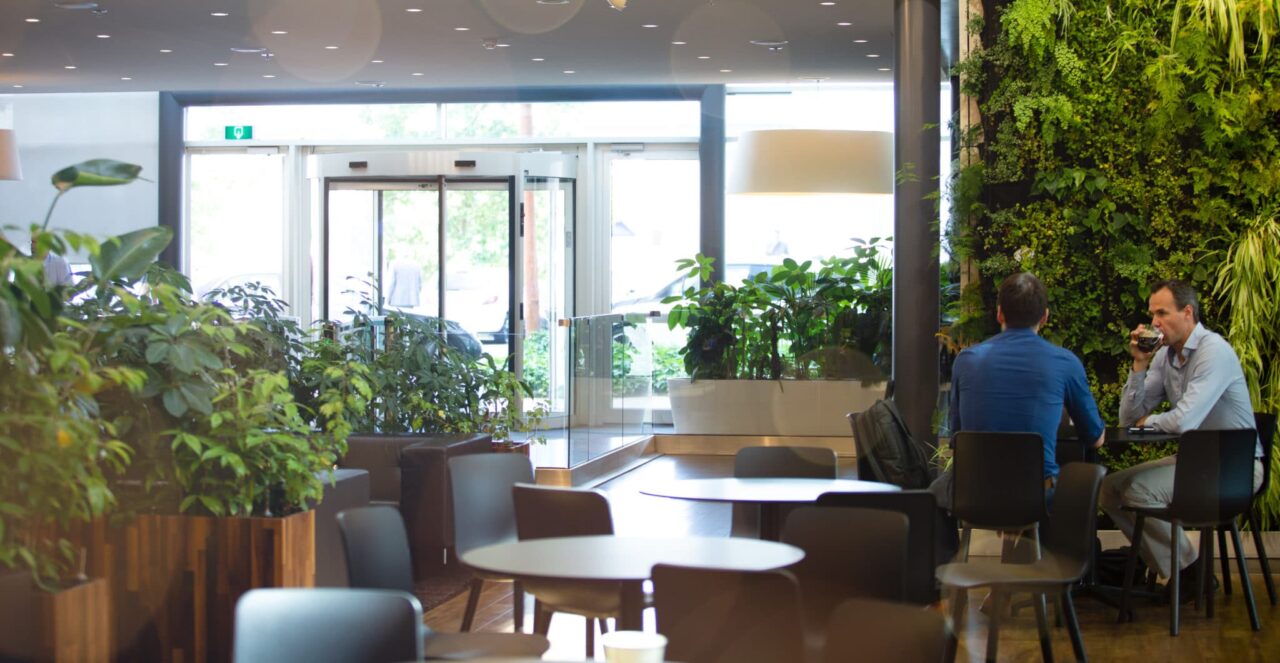- Virgin Media O2 has unveiled the first electric vehicle (EV) in its new fleet, as it announces plans to install EV charging points at all its fleet drivers’ homes
- Through its ‘dig once’ approach with Liberty Charge (deploying charging points at the same time as fixed and mobile networks) the company is working to supercharge the rollout of electric vehicle infrastructure across the UK
Virgin Media O2 has unveiled the first of its new electric vehicles (EVs), as it works to transition its entire fleet to EVs by 2030. Alongside the new zero-emission vehicles, the business is also committed to supporting the rollout of EV charging infrastructure nationwide, offering free charging points to its fleet drivers and continuing to deploy charging points alongside its fixed and mobile network rollout across the UK.
This first step towards Virgin Media O2’s 2030 EV fleet goal has seen the business order 280 new electric vans to carry out service and install visits at customers’ homes. Drivers of Virgin Media O2’s 4,300-vehicle fleet will also be offered charging points in their own homes as part of the move. Virgin Media O2 already offers EV charging for employees at its Slough, Reading and Hammersmith offices.
Building better EV charging infrastructure
Since 2020, Virgin Media has been working with Liberty Charge (a joint venture between Virgin Media O2 joint owner Liberty Global & Zouk Capital) to install EV charging points alongside its existing infrastructure and ongoing network build programme, and support the transition to EVs. Liberty Charge and Virgin Media O2 are continuing to work together to assess where they can follow a ‘dig once’ strategy – deploying fixed and mobile solutions at the same time as EV charging infrastructure. As well as streamlining the installation process and making it more convenient for all, this helps create the foundations for the smart-city networks of the future.
Tracey Herald, Head of Corporate Responsibility & Sustainability at Virgin Media O2 said: “With a fleet of 4,300 vehicles visiting millions of homes and businesses every year, we have a responsibility to swap to cleaner, more sustainable alternatives as soon as possible. I’m proud that we’re introducing the first EVs to our fleet, and giving our valued field engineers access to the charge points they need to keep moving.
“The only way to encourage businesses and the public to make the switch to EVs in time for the UK’s 2050 net zero target is by making vehicle charging points widely available and accessible to all. We’re eagerly anticipating the Government’s EV strategy and plans for wider infrastructure rollout, and together with Liberty Charge, we’re committed to using our expanding national network and street furniture to help put charging points where they need to be – and drive the UK towards net zero.”
Neil Isaacson, CEO of Liberty Charge adds: “At Liberty Charge, our goal is to tackle the chronic under-supply of easily-accessible on-street charging in the UK and help councils meet the very clear public need of the millions of households who need reliable, cost effective EV charge points close to their home. As our delivery partner, Virgin Media O2 is instrumental to this goal – deploying the infrastructure required and working with local authorities to overcome any delivery obstacles faced. And it doesn’t stop there: by the end of the year, our Charging Network will be operational in 6 local authorities, with more than 500 sockets open to the public and with many, many more to come in 2022.”
Supporting cleaner transport for the future
Virgin Media O2 is committed to using its digital capabilities to help reduce transport emissions and contribute to the UK’s net zero future. Working with the Smart Mobility Living Lab, it is supporting the development of 5G Connected & Autonomous Vehicles (CAVs) which use connected sensors and stream information from one vehicle to another via the 5G Network in real-time.
5G-connected vehicles cut carbon by allowing for reduced idling, as well as route planning to avoid the most polluted and congested areas. They also enable smarter driving patterns such as lower acceleration rates and platooning (where two vehicles follow each other closely to reduce aerodynamic drag).
As part of its trials, O2 has converted two Renault TWIZY electric cars into CAVs and fitted them with LIDAR sensors, to allow autonomous driving as well as remote control at slow speeds.







